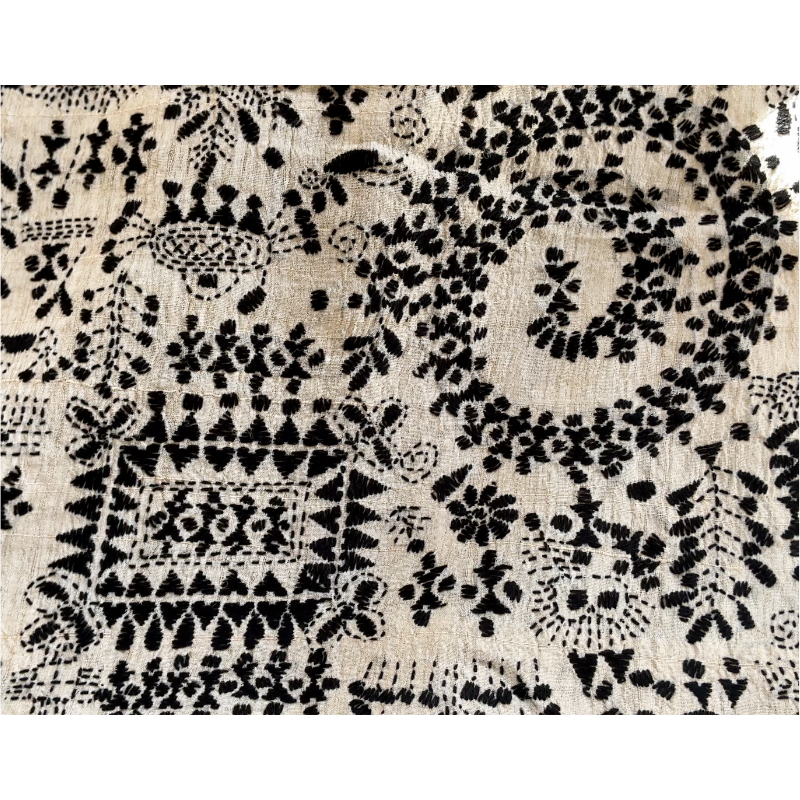This is how my Sari Silk Bead Necklaces are Actually Made
- Preeti Mehta

- Nov 13
- 3 min read
I was stunned. The comment was rude and uninformed. But, I get it. Handmade jewelry looks so deceptively simple, it's easy to get, well, deceived.
That is, until you really learn what you're looking at.
And, to be honest, the hand-work is never as visible on screen as it is in person. Instead of deleting the comment, I explained the process.
In fact, a skeptical comment is often a sheep in wolf's clothing to a founder. It forced me to think about the handmade process, the story, and why my sari silk bead necklaces are so unique.
And then, of course respond, with the details of this meticulous and laborious process..
And the comment? It's at the end of this post. The process steps are below:
Step 1: Pairing the thread and fabric It begins with sari remnants — pieces of silk that once held another life. The fabric is ironed flat and folded several times to give it the strength, and then it is matched with a thread color that contrasts, matches or complements the fabric color.

Step 2: Hand Sewing the Tubes The fabric is cut into narrow strips and sewn into tubes by hand. This is done with patience and care — no two are quite the same, and that’s part of their beauty.

Step 3: Filling with Beads Each silk tube is filled with sheesham wood beads — the same type used in prayer malas. The wooden beads give the necklace its shape. The beads weigh almost nothing, allowing these necklaes to be extremely ligtweight. Once filled, the fabric between each "bead" is tied off by hand and stitched into place, again by hand. This step takes precision — the knots must be tight enough to hold their place but gentle enough not to pull the silk.

Step 4: Layering and Positioning Multiple "strings" are made this way. These strings are then layered and positioned in place so they hang perfectly around your neck when finished.

Step 5: Securing the Ends The ends of the strings are then stitched and reinforced in place to ensure lasting quality. Yes, again, by hand.

Step 6: Finishing Depending on the design, finishing the necklace involves stitching of the ends together, and sewing the ties in place. For certain styles that don't require ties, a beaded clasp, also created by hand holds the strings together.

Behind every sari silk beads necklace are hours of slow, deliberate work — sewing, knotting, and adjusting until it feels just right.
Sharing this process matters to me because handmade work is real, it's authentic.
It reminds us that something as simple as a necklace can be the sum of many hands, but more importantly, of many creative minds and hearts. Aritsans are designers too, and they pour their hearts into making each piece by hand.
Finally, the comment:
Someone commented, "It's strings of beads...I make my own...The meticulous work is taped together???"
In all my years of running this Ad, this is the first negative comment I have had.
Honestly, I'm the better for it I think.




Very nice to see the many steps that it takes to make such a beautiful necklace!